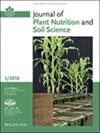Effects of Integrated Soil Fertility Management on Soil Properties and Phosphorus Sorption Characteristics at Three Soil Types in Southern Ethiopia
Abstract
Background
Low phosphorus availability in Ethiopian soil, mostly due to P sorption, is limiting agricultural crop productivity. Thus, effective phosphorus management is critical to addressing soil nutrient shortages.
Aim
This study evaluated the effect of integrated soil fertility management (ISFM) on soil properties and phosphorus sorption characteristics at three soil types in Southern Ethiopia.
Methods
Phosphorus sorption was determined by batch equilibrium methods, using the Langmuir and Freundlich models. Treatments included control, phosphorus fertilizer, biochar, compost, biochar with phosphorus fertilizer, and compost with phosphorus fertilizer.
Results
Results showed that the combined fertilizer application improved soil properties over the phosphorus fertilizer application. The application of biochar with phosphorus fertilizer to soil produced more available phosphorus in the acidic Luvisols, whereas the highest available phosphorus was obtained from the application of compost with phosphorus fertilizer in the Cambisols and Fluvisols, respectively. The phosphorus sorption data best fitted the Freundlich (R2 = 0.82–0.98) models with all soil types. The application of ISFM decreased the Freundlich parameter values in all the studied soils compared to the addition of inorganic P. Luvisols require more phosphorus fertilizer to maintain optimal soil phosphorus concentration for crop growth compared to Cambisols and Fluvisols.
Conclusion
The ISFM showed potential to improve soil available phosphorus in the smallholder farming system of Southern Ethiopia. This could be attributed to the release of phosphorus through the mineralization of organic matter and phosphorus desorption from Fe and Al oxides in acidic, and Ca in alkaline soils.

 求助内容:
求助内容: 应助结果提醒方式:
应助结果提醒方式:


